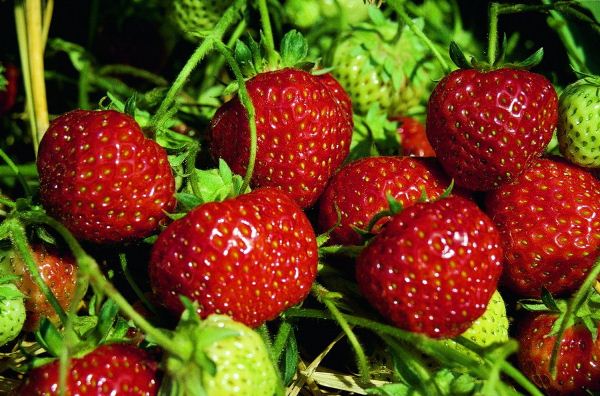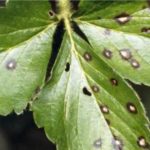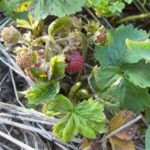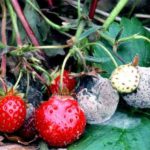Strawberry has excellent taste and grows in almost every garden. And old varieties bred long ago in no way inferior to the novelties of modern breedingand. One of these popular varieties is Zenga Zengana, a description of which can be found below.
Table of contents
Description
Zenga zengana is the property of German selection. This strawberry shrub is quite high, but very compact, so more dense planting is allowed, which can significantly increase the yield. Peduncles are located either at the level or just below the leaves, which in turn are painted in a dark, green color and have an oval shape of medium size.

Variety of garden strawberries Zenga zengana tolerates winter frosts right up to -24 degreesif the temperature is released below, the shrub will need additional shelter. This quality allows you to grow a variety in the central zone of Russia, in colder climates you will have to work hard to protect the strawberries from freezing.
The berries ripen in average terms, around mid-June., and fruiting lasts until early September, which allows you to collect tasty and juicy berries for a long time. From one plant you can collect 1.5 kilograms fruits. Usually, the life of such a bush is 4-5 years, after which it will have to be rooted out and planted more young plants.
Characteristic berries
Berries of strawberries Zenga Zengan variety on average weigh 10-15 grams, but sometimes there are instances weighing up to 30 grams. The shape of the fruit is quite diverse, but most often the correct, cone-shaped.
The color of the berries varies depending on the conditions in which they grow. Strawberries grown in the shade are bright red, and fruits that receive as much sunlight as possible usually take on a dark, burgundy shade. The color of the flesh changes from pink to dark red.
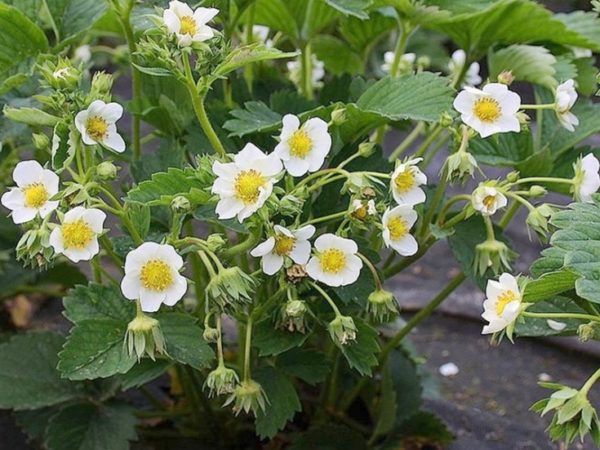
The surface of the berries is dense, shiny, with pronounced yellowish seeds. The good consistency of the fruit and lack of wateriness allows you to transport them without losing the shape and presentation..
The taste of strawberries is pleasant, sweet and sour, which allows using it both for fresh consumption and for processing. Another positive quality is considered an excellent aroma..
Breeding history and region of growth
The variety Zenga Zengana was obtained in Germany by crossing a wild sage Merge and a cultivar Sieger.This combination gave an excellent plant that has many advantages, one of them is considered to be unpretentious to the soil. Usually such garden strawberries can be found in the North Caucasus.but it is also possible to grow it in central Russia. The variety perfectly tolerates winter cold and spring frosts, but additional protection in the form of special shelters will always be a good help for the plant.
The advantages and disadvantages of the variety
Advantages:
- The main advantage can be considered taste and aroma of berriesthat will appeal to both adults and children;
- Also fruit have good transportability, because of what they are often grown for commercial purposes;
- Himself Bush, though tall, but compactthat allows you to plant many plants in a small area;
- This variety can be grown almost under any weather conditions, it is also necessary to note its unpretentiousness to the soil;
- Root system possesses immune to fungal diseases;
- One of the best qualities of Zenga zengan can be considered preservation of the shape of the fruit with freezing and cooking.
Disadvantages:
- Many gardeners believe that long-term fruiting is rather a minus than a plus, because at the end of the season the plant spends more energy on setting small fruits;
- Also not very well characterizes the grade poor pest resistance and some diseases.
Landing
Proper planting of strawberry Zenga Zengana is in many aspects that must be observed.
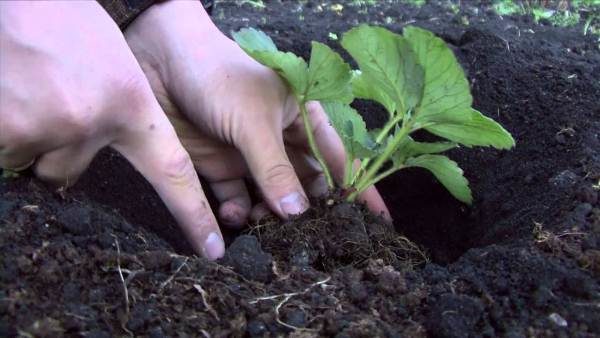
First you need to decide on a place. This culture prefers flat surfaces located on the south side of the plot, because the main condition for ripening berries will be the presence of large amounts of sunlight.
As for the timing, then experienced summer residents recommend planting strawberries in early spring or late summer - early autumn.
It is also very important to prepare the soil before planting, for this purpose perform the following actions:
- To start check if there are any various pests in the soil. When they are detected, the soil can be treated with 2 kilograms of ammonia diluted in 10 liters of water;
- Also be sure to weed the earth, thereby getting rid of weeds;
- Mandatory procedure will be soil nutrient enrichment, for this, 2-4 weeks before landing on a digging of 1 square meter make the following fertilizers:
- 6 kilograms of humus or rotted manure;
- 40 grams of superphosphate;
- 20 grams of potash fertilizer.
- Another important point is considered soil acidity, it should not be elevated. To achieve the desired effect for 3 years before planting, they dig up the earth together with 300 grams of dolomite flour.
Planting strawberries

- Single line method lies in the fact that the distance between the rows is equal to 70 centimeters, and between bushes 20.
- In two or more lines - for such a planting, several rows of strawberries are planted on the same ridge, while the distance between the ridges is 70 centimeters, between the lines 30, and between individual plants located in the same row 20;
- One of the most convenient is considered non-washer methodin the course of which the bushes are planted in the same way as with the lower-case method, but at the same time, the land between the rows is covered with black film. In order to avoid overheating of the root system, a layer of straw is placed on top of the film.
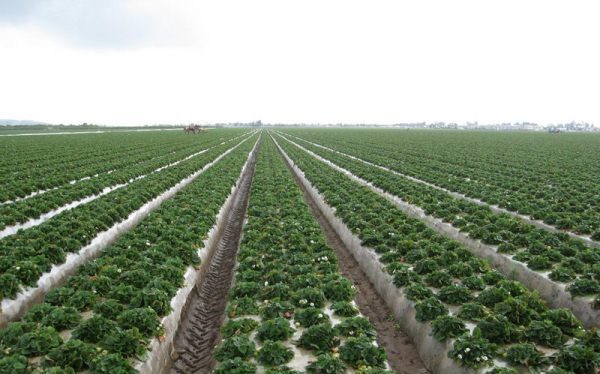
For planting strawberries follow the following rules:
- at first dig up small holes, water them and put a seedling there;
- central kidney must be on the surface of the earth;
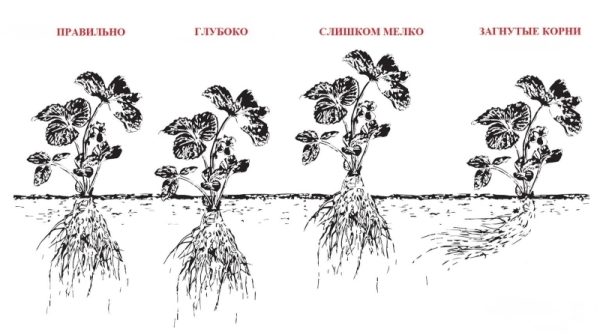
- then the soil is richly moistened and harbor mulch.
Care
To care for Zenga Zengan is not so difficult, the main thing is to adhere to the basic regulations, in accordance with which the following actions are necessary:
- after wintering plants are completely cleaned, removing weeds and frozen bushes,it is also necessary to remove a layer of mulch that was laid in late autumn;
- before each watering the land is necessarily loosened;
- garden strawberries watered once 1-2 weeks, depending on weather conditions and the amount of precipitation.
- it is very important to mulch the earth each time after watering (most often 5 cm layer of sawdust is used);
- Also, experts recommend keeping the ridge clean by systematically removing weeds.
Top dressing
| In early spring | Immediately after loosening the soil is fertilized with nitrogen fertilizers, for example, urea. |
|---|---|
| When the first leaves appear | Each plant is watered with infused mullein with the addition of ammonium sulfate; |
| Early may | Complex mineral fertilizers; |
| Before flowering | Instead of water, watering using a solution of potassium sulfate or nitrophoska; |
| Immediately after collecting the last batch of harvest, the bushes are watered with infusion of wood ash. |
For, to prepare garden strawberries for winter, it is necessary to thoroughly weed and plow through the earth and spray the plants against pests. Then remove all whiskers and greens, and cover the plant with a thick layer of mulch consisting of sawdust or peat. Also, if necessary, bushes cover with burlap or agrofibre.
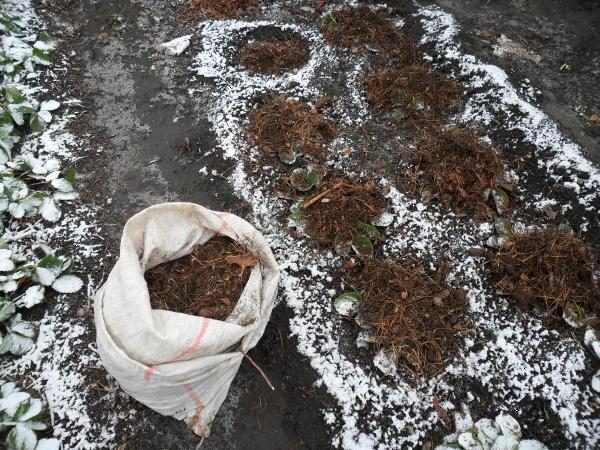
Features variety Zenga Zengana
- Garden strawberries of this sort can bear fruit for a very long timealmost throughout the summer. But the last batch of fruit is much smaller than the first.
- A curious fact is that On one bush you can see both berries and flowers.;
- At the Zenga Zengan variety practically no mustache, which improves the process of fruit set, but at the same time makes reproduction difficult;
- Many gardeners grow such garden strawberries in order to use it for blankssuch berries do not lose their shape and taste.
Diseases and pests
Zenga Zengan variety is not exposed to various diseases, especially those that affect the root system of the plant. Most often on such garden strawberries can be found gray rot, white leaf spot and strawberry mite. In order to avoid their occurrence, the following preventive procedures are recommended.:
- keep the ridges clean with strawberries;
- remove diseased plants in a timely manner;
- apply the required amount of fertilizer;
- in the spring and autumn to spray bushes with fungicides and pesticides.
- White spot of leaves of strawberry Zenga Zengan
- Signs of infection with strawberry mite
- The fruits of strawberries Zenga Zengan affected by gray rot
To combat gray mold, treatment is carried out using the following means:
- A mixture of a glass of ash, a glass of chalk, a teaspoon of copper sulfate and 10 liters of water;
- You can also use 1 percent Brody fluid.
From leaf spot helps triple spraying with 1% Brodian liquid when the buds appear, before flowering and immediately after harvest. It is also necessary to remove the affected plants.
There is a very many chemicals against strawberry mite. But more often experienced gardeners recommend to use Karbofos or colloidal sulfur.
Variety of garden strawberries Zenga Zengana is perfect for temperate areas, he is able to bring numerous crops of very tasty berries. In addition, this plant does not require complex care.
